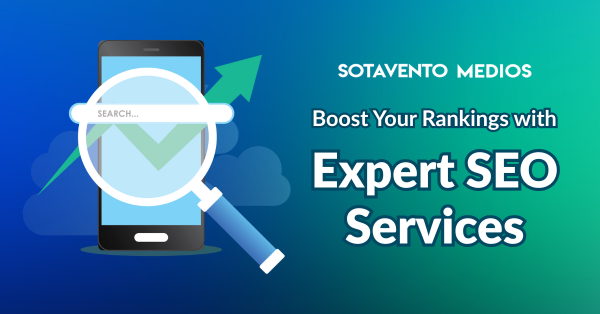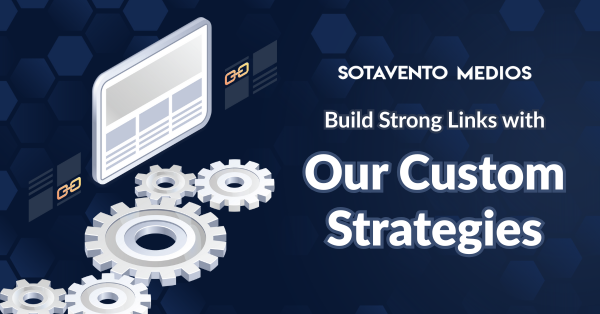The claim that “Google SEO is dead” appears with every major algorithm update, each significant shift in search technology, and most recently, with the rise of Generative AI. For seasoned marketing managers and technical SEO experts, this statement isn’t an announcement of death; it signals that Search Engine Optimization has reached a new critical stage in its evolution.
From the viewpoint of Sotavento Medios, a technical SEO firm focused on delivering clear B2B value, SEO is far from dead. It has simply evolved past the ‘set-and-forget’ approach. The old strategies, which relied on keyword stuffing and volume-based link building, are outdated. The new practice is a complex, high-stakes game of Search Experience Optimization (SXO) and Generative Engine Optimization (GEO). The recent 2024 and 2025 Google Core and Spam Updates highlight this: Google is actively removing low-value, templated content to reward genuine expertise and technical authority.
This change opens a big opportunity for B2B brands willing to invest in strategic technical excellence. The goal has shifted from merely ranking to becoming the trusted source that AI models and human decision-makers refer to.
The Death of Legacy SEO: What Actually Expired
To grasp the current competitive landscape, we first need to understand what no longer works in the post-AI search environment.
The Algorithm Graveyard: Tactics That No Longer Convert
- Keyword Repetition (Frequency over Intent): Dependence on a specific keyword count is outdated. Google’s advanced language models, such as those in the Gemini family, focus on the meaning and context of queries, punishing content that sacrifices clarity for keyword frequency.
- The Content Farm Model: Large-scale, barely-there AI-generated content or programmatic SEO that lacks real editorial oversight is now a prime target for Google’s stringent spam and quality updates. While the barrier to producing content is low, creating authoritative, citable content is harder than ever.
- Manipulative Link Building: The value of low-quality, high-volume backlinks has significantly declined. Google emphasizes Digital PR and Brand Authority, where mentions and links from reputable, industry-specific sources are what truly count.

In summary, what has died is manipulation, scalability without quality control, and tactics that overshadow strategy.
Technical SEO 2.0: Optimizing for the Generative Era
The emergence of Google’s Search Generative Experience (SGE) and the growing use of Large Language Models (LLMs) like ChatGPT fundamentally change the visibility metric from a “click” to a “citation.” For B2B companies, this requires a strong commitment to both technical and content authority.
I. The Priority Shift: From Keywords to Entity Optimization
Modern search engines index entities (people, places, organizations, concepts) rather than just strings of words.
- Implement Advanced Structured Data (Schema): Go beyond basic organization schema. B2B brands must utilize Article, FAQPage, HowTo, and crucially, About and Author schema to emphasize Expertise, Experience, Authority, and Trustworthiness (E-E-A-T). This technical signal helps AI models see you as a trusted source.
- Build Intent-Based Topic Clusters: The old keyword-to-page model is inefficient. Develop Pillar Content that thoroughly covers a broad industry topic, with supporting Cluster Content that answers detailed, long-tail queries and buyer-journey stages. This structure shows deep topical authority to search engines.
II. Generative Engine Optimization (GEO) and the Zero-Click Challenge
The main threat—and opportunity—is the zero-click search, where an AI Overview answers the user’s question without needing a site visit. Your strategy should aim to be the source cited in that overview.
- Conversational Content Architecture: AI Overviews excel at summarizing clear, concise answers to questions. Structure your B2B content with straightforward H3 Question/Answer pairs and bulleted summaries that AI models can easily digest. Optimizing for long-tail, conversational queries (e.g., “What is the ROI of B2B programmatic advertising?”) is crucial.
- Optimize for Non-Google Channels: Today’s search journey is fragmented. An effective strategy must include Search Everywhere Optimization. This means organizing your content for visibility on YouTube, optimizing product data for Amazon and Google Shopping, and building a strong, authoritative presence on niche B2B platforms like LinkedIn. These secondary channels provide robust authority signals.
III. Core Web Vitals and the B2B User Experience
In a fiercely competitive B2B market, site speed and user experience (UX) are no longer just ranking factors; they are essential for conversion. Decision-makers have no patience for slow, poorly designed sites.
- Master Core Web Vitals (CWV): A B2B technical audit should prioritize Largest Contentful Paint (LCP) for fast loading of primary content and Cumulative Layout Shift (CLS) to ensure stability during form filling or case study reading. Technical performance directly influences business credibility.
- Mobile-First Indexing with a B2B Focus: While mobile optimization is standard, B2B research often involves high-intent, detailed research on desktop. Ensure that important, complex data (e.g., detailed charts, technical specifications, contact forms) is accessible and functional across all screen sizes.
The B2B Growth Imperative: Redefining SEO Value
The end of “Google SEO” simply signifies the end of low-effort marketing. For B2B companies, the evolution of search has transformed SEO from a tactical concern to a strategic, revenue-generating foundation.
The new SEO blends data science, content quality, and technical expertise. It shows genuine Experience (first-hand product use, case studies), Expertise (credentialed authors, niche depth), Authority (links and citations from industry leaders), and Trustworthiness (transparent data, secure site, accessible contact information).
This is not a game for generalists. It requires specialized knowledge to interpret algorithm updates, implement complex schema, and create a content strategy that fits with a complex, AI-influenced B2B buyer journey.
Next Step: Move Beyond the Noise. Invest in Technical Authority
The question isn’t if SEO is dead, but if your current strategy is still relevant and adjusted to the Generative AI era. Low-quality traffic from the old SEO model is fading; high-value, high-intent visibility from a technical, authoritative approach is flourishing.
The future of B2B visibility depends on your technical foundation.

















